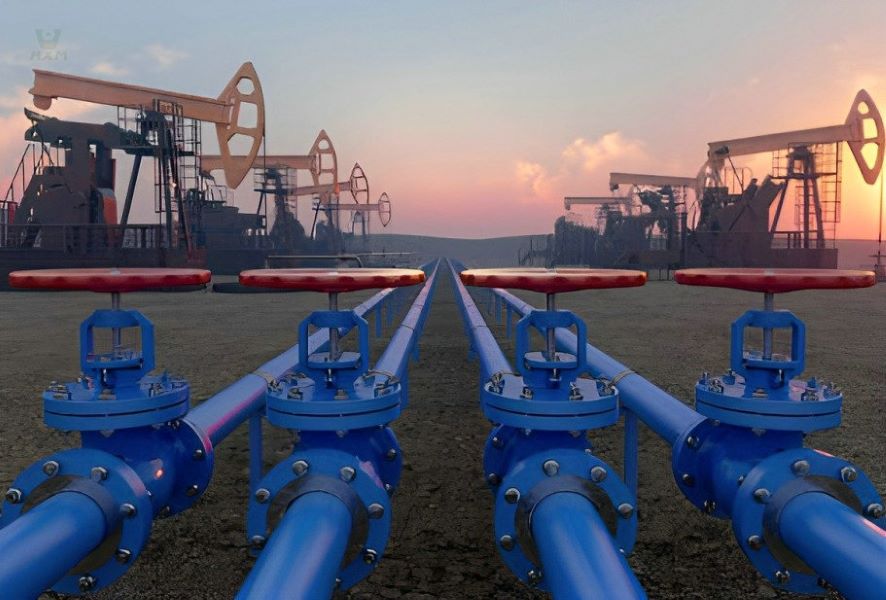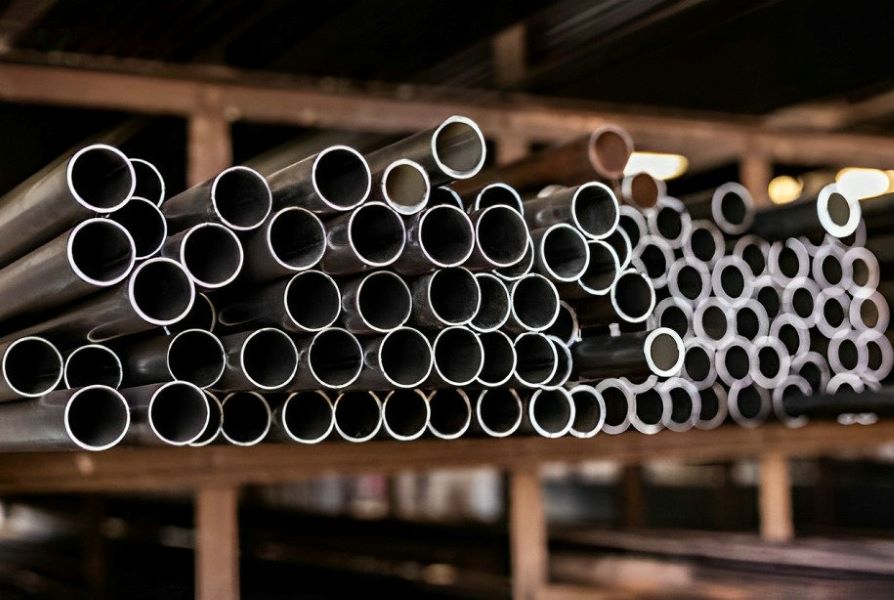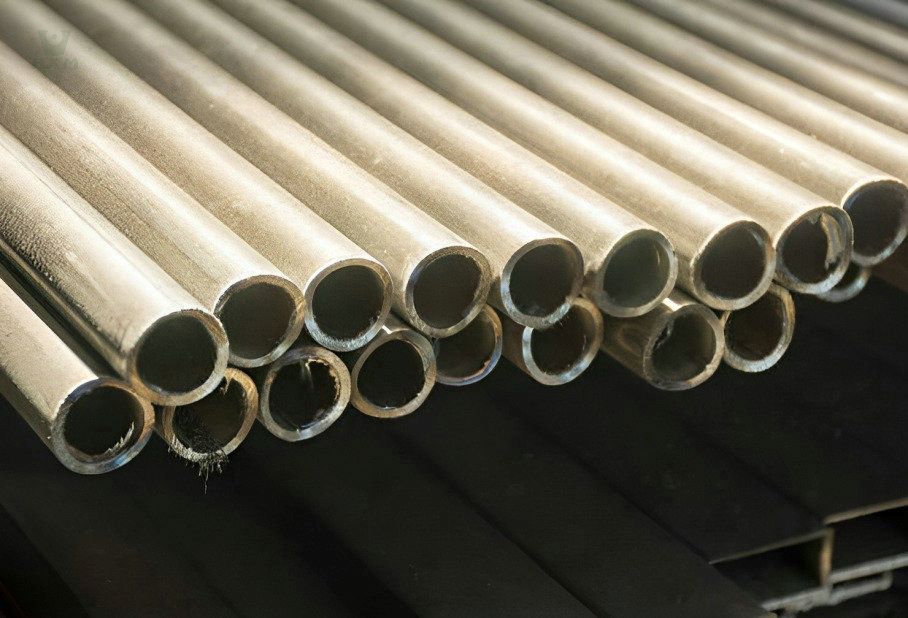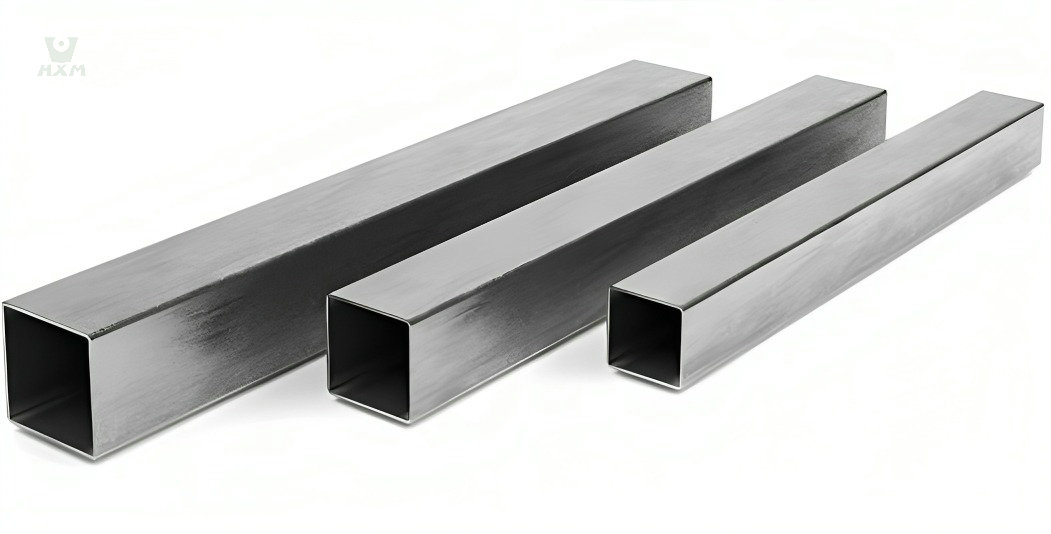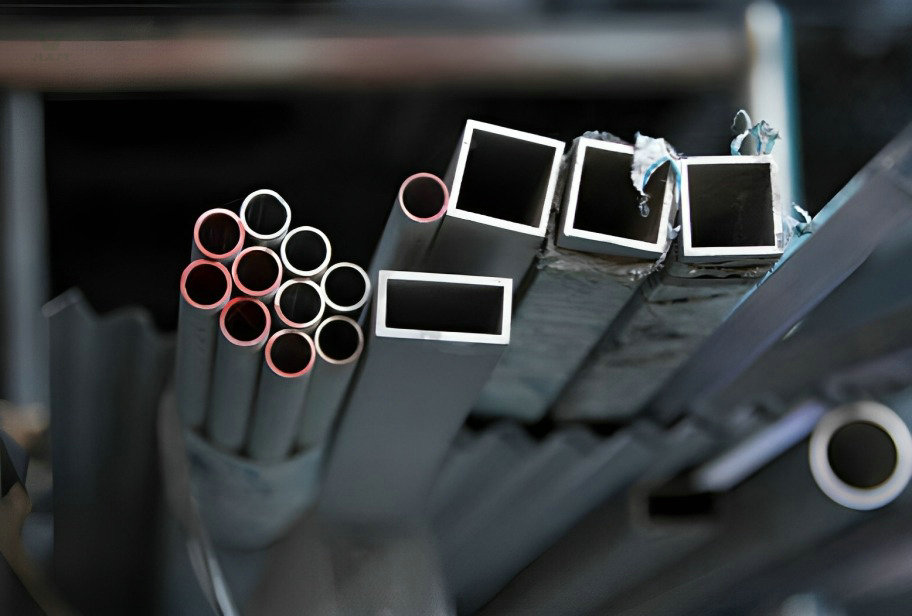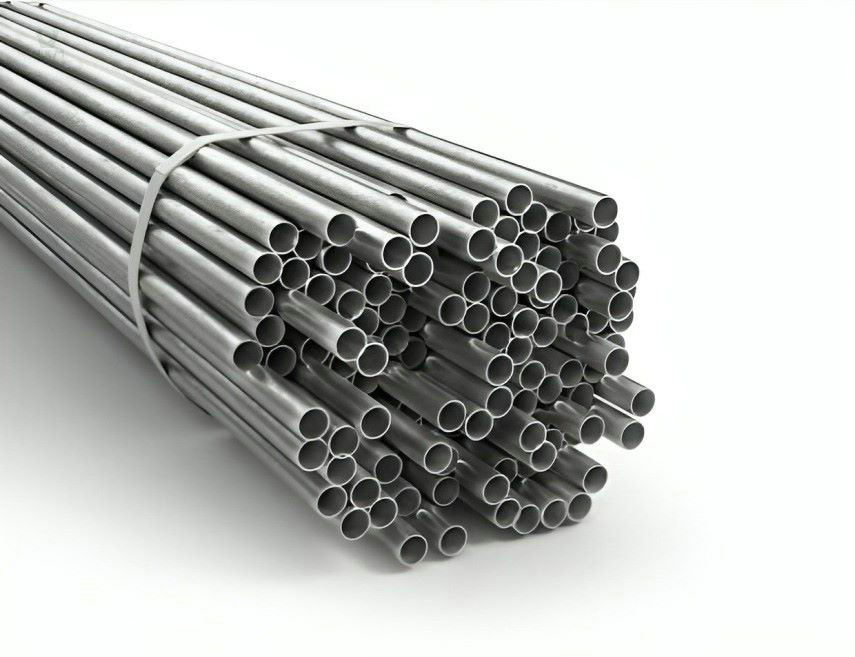Seamless Stainless Steel Drilling Pipe
Square Drilling Pipes: From 0.500 inches to 2.500 inches
Rectangle Drilling Pipes: From 1.000 inches x 0.500 inches to 4.000 inches x 2.000 inches
Round Drilling Pipes: From 0.125 inches OD to 26.000 inches OD
Certification: ISO9001:2015
MOQ: 2MT
Payment method: T/T, LC
Price: Inquiry Factory Price Now
Product Range of seamless stainless steel drilling pipe
product range of stainless steel drilling pipe
- Size Range:
- Square Pipes: From 0.500 inches to 2.500 inches
- Rectangle Pipes: From 1.000 inches x 0.500 inches to 4.000 inches x 2.000 inches
- Round Pipes: From 0.125 inches OD to 26.000 inches OD
Length Range:
- Range 1 (R1): Ranges from 18 to 22 feet, more common for sizing production tubing or casing.
- Range 2 (R2): Considered the standard length for drill pipe and ranges from 27 to 31 feet.
- Range 3 (R3): Common in casing and also deployed in deep water drilling applications.
Material Grades:
Standards:
- Adherence to standards such as ASTM A511, ASTM A512, ASTM A513, and ASTM A519.
product description of seamless stainless steel drilling pipe
Experience the pinnacle of durability and performance with our Seamless Stainless Steel Drilling Pipe. Comprising about 95% of the drill string, this pipe is a critical component in resource extraction, where reliability is paramount. Meticulously crafted, it begins as a solid round steel ‘billet,’ expertly heated and shaped to perfection, resulting in a flawless, hollow pipe. Precision engineering takes it a step further as our seamless stainless steel pipes are extruded through a die and mandrel combination, refining the outside diameter and expanding the inside diameter to facilitate the crucial flow of drilling fluid, ensuring uninterrupted and efficient drilling processes.
But it’s not just about form; it’s about substance too. Crafted from an iron alloy enriched with a minimum of 10.5% chromium, our pipe boasts unparalleled corrosion resistance. In the harshest drilling environments, it maintains structural integrity, delivering reliability when you need it most.
Maintenance is a breeze with stainless steel, known for its ease of cleaning and resistance to tarnishing, translating to less downtime for upkeep and a longer lifespan for your equipment. While suitable for various industries, our Seamless Stainless Steel Drilling Pipe truly shines in oil drilling applications, where high-temperature strength and superior corrosion resistance are indispensable. When the pressure is on and the stakes are high, trust in our stainless steel pipe to deliver exceptional performance, ensuring your drilling operations run smoothly, even in the most challenging conditions. Elevate your drilling to new heights with the reliability and durability of our Seamless Stainless Steel Drilling Pipe.
characteristics of seamless stainless steel drilling pipe
Seamless stainless steel drilling pipes exhibit a remarkable attribute known as high temperature strength, a critical characteristic in various industrial applications. This property is a consequence of the unique composition and microstructure of stainless steel, particularly grades like 304, 321, and 316L.
At elevated temperatures, materials tend to undergo structural changes that can lead to reduced strength and integrity. However, seamless stainless steel drilling pipes demonstrate exceptional resistance to this phenomenon. This high-temperature strength can be attributed to several key factors:
Crystal Structure Stability: Stainless steel possesses a stable crystal structure even at elevated temperatures. The face-centered cubic (FCC) crystal lattice of austenitic stainless steel, such as grade 316L, allows it to maintain its strength and integrity when exposed to heat.
Alloying Elements: The alloying elements in stainless steel, such as chromium, nickel, and molybdenum, contribute significantly to its high-temperature strength. Chromium forms a protective oxide layer on the surface of the steel, enhancing resistance to oxidation and scaling at high temperatures. Nickel enhances the stability of the austenitic phase, further improving high-temperature strength. Molybdenum adds to the alloy’s ability to resist corrosion and maintain strength in aggressive environments.
Creep Resistance: Creep is the tendency of a material to deform slowly under constant load at high temperatures. Stainless steel’s microstructure and alloying elements make it highly resistant to creep, ensuring it retains its shape and strength even during prolonged exposure to elevated temperatures.
Phase Transformation: Some grades of stainless steel, like 321, are designed to include titanium as a stabilizing element. This minimizes the risk of sensitization, a process in which chromium carbides form at grain boundaries during heating. By preventing sensitization, the stainless steel maintains its high-temperature strength and corrosion resistance.
In practical applications, such as drilling in geothermal reservoirs or in industrial settings with elevated operating temperatures, seamless stainless steel drilling pipes can withstand the challenges of high heat without compromising structural integrity. This makes them a reliable choice for operations where temperature extremes are a constant concern, ensuring the safety and efficiency of drilling processes.
The feature of superior corrosion resistance in seamless stainless steel drilling pipes is a testament to the exceptional performance of these materials in aggressive and corrosive environments. This property is primarily attributed to the inherent characteristics of stainless steel, particularly grades like 304, 321, and 316L.
Passive Layer Formation: Stainless steel contains chromium as a crucial alloying element, typically in concentrations exceeding 10.5%. When exposed to oxygen, chromium reacts to form a protective oxide layer on the surface of the steel. This passive oxide layer is highly stable and prevents further oxidation or corrosion of the underlying metal. It acts as a robust barrier against corrosive agents, including moisture, chemicals, and salts.
Resistance to Pitting Corrosion: Seamless stainless steel drilling pipes, especially those made from 316L, exhibit remarkable resistance to pitting corrosion. Pitting corrosion is a localized form of corrosion characterized by small pits or craters on the material’s surface. The high chromium and molybdenum content in 316L stainless steel make it particularly effective in resisting this type of corrosion, even in chloride-rich environments like seawater.
General Corrosion Resistance: Stainless steel pipes offer broad-spectrum resistance to general corrosion caused by various chemical substances. They maintain their structural integrity when exposed to acids, bases, and a wide range of industrial chemicals, making them suitable for applications in chemical processing industries.
Crevice Corrosion Resistance: Seamless stainless steel drilling pipes are also highly resistant to crevice corrosion, a form of corrosion that occurs in confined spaces or crevices where aggressive agents can accumulate. The passivity of the stainless steel surface prevents the initiation and propagation of crevice corrosion, ensuring long-term durability.
Hydrogen Embrittlement Resistance: In applications involving exposure to hydrogen, such as in petrochemical industries, stainless steel pipes demonstrate resistance to hydrogen embrittlement, which can compromise the structural integrity of materials.
Longevity in Harsh Environments: The ability of stainless steel to withstand harsh environmental conditions, including marine environments, chemical plants, and offshore oil and gas exploration, is a testament to its superior corrosion resistance. This longevity translates to reduced maintenance costs and extended service life.
In summary, seamless stainless steel drilling pipes’ superior corrosion resistance is a result of their unique composition and the formation of a protective passive oxide layer. This property ensures their reliability and performance in challenging and corrosive environments, making them a preferred choice for critical applications where corrosion prevention is paramount.
Seamless stainless steel drilling pipes are renowned for their exceptional durability, making them suitable for demanding industrial applications. This durability stems from several key factors:
Material Composition: Stainless steel is an alloy that combines iron with chromium, nickel, and other elements. This alloying imparts inherent strength and resistance to corrosion, ensuring that the pipes can withstand harsh environments and extended use.
High Tensile Strength: Stainless steel, particularly grades like 304, 321, and 316L, possesses high tensile strength, meaning it can resist external forces and stresses without deforming or breaking. This characteristic is vital in applications where pipes are subjected to significant pressure and mechanical loads.
Resistance to Wear and Abrasion: Stainless steel pipes are highly resistant to wear and abrasion, ensuring that they maintain their structural integrity over extended periods of use. This resistance is crucial in industries such as mining and drilling, where pipes come into contact with abrasive materials.
Temperature Resilience: Seamless stainless steel drilling pipes exhibit excellent resilience to temperature extremes. They can withstand both high and low temperatures without undergoing structural changes or compromising their strength, making them suitable for diverse operating conditions.
Strength is another key attribute of seamless stainless steel drilling pipes, and it can be further categorized into several aspects:
Tensile Strength: Stainless steel pipes boast impressive tensile strength, allowing them to resist axial loads and stretching forces without deformation or failure. This strength is particularly valuable in applications where pipes need to support their weight and the weight of drilling equipment.
Yield Strength: The yield strength of stainless steel pipes refers to the point at which they begin to deform plastically under applied stress. Stainless steel’s high yield strength ensures that it can withstand substantial loads before any permanent deformation occurs.
Pressure Resistance: Seamless stainless steel drilling pipes are engineered to handle high-pressure environments, such as those encountered in oil and gas drilling operations. Their inherent strength and resistance to pressure fluctuations contribute to their reliability and safety.
Buckling Resistance: The pipes’ strength also makes them resistant to buckling or collapsing under compressive forces. This is crucial for maintaining the integrity of the borehole during drilling operations.
In summary, the durability and strength of seamless stainless steel drilling pipes are a result of their material composition, high tensile strength, resistance to wear, and ability to withstand temperature extremes. These attributes ensure their longevity and reliability in demanding industrial applications, making them an essential component of drilling operations.
Hygiene and cleanliness are vital considerations in industries where contamination and the growth of microorganisms can have serious consequences. Seamless stainless steel drilling pipes excel in maintaining these standards for several reasons:
Non-Porous Surface: Stainless steel pipes have a non-porous surface, which means they have a smooth, impermeable finish. This property prevents the absorption of contaminants, liquids, or gases into the material, ensuring that the pipe remains clean and uncontaminated.
Resistance to Corrosion and Rust: Stainless steel’s resistance to corrosion and rust is a key factor in maintaining hygiene. It prevents the formation of pits, cracks, or crevices where contaminants could accumulate. In applications involving water supply or food processing, stainless steel pipes are highly resistant to rust and corrosion, which could otherwise compromise the purity of the transported fluids.
Bacterial Resistance: Stainless steel surfaces naturally resist the attachment and growth of bacteria, fungi, and other microorganisms. This property is crucial in industries such as food and pharmaceuticals, where maintaining a sterile environment is essential.
Ease of Cleaning: The smooth surface of stainless steel pipes makes them easy to clean and sanitize. They can be effectively cleaned using standard cleaning agents, ensuring the removal of contaminants and pathogens.
Chemical Compatibility: Stainless steel pipes are compatible with a wide range of chemicals and cleaning agents without suffering corrosion or degradation. This allows for thorough cleaning and sanitation processes without compromising the integrity of the pipes.
Long-Term Durability: The durability of stainless steel ensures that it maintains its hygiene and cleanliness properties over the long term. Unlike some other materials, stainless steel does not degrade or release contaminants into the conveyed fluids, ensuring consistent hygiene standards.
Regulatory Compliance: In industries where strict hygiene and cleanliness regulations apply, seamless stainless steel drilling pipes are often chosen to meet these compliance requirements.
In applications such as the transportation of potable water, food processing, pharmaceutical manufacturing, and cleanroom environments, the hygiene and cleanliness of the conveyance system are paramount. Seamless stainless steel drilling pipes meet these stringent requirements, providing a reliable and sanitary conduit for various substances while preventing contamination, ensuring the purity of the conveyed fluids, and upholding the highest hygiene standards.
The high heat resistance of seamless stainless steel drilling pipes is a fundamental property that allows them to maintain their structural integrity and performance under elevated temperatures. This resistance is particularly valuable in industrial applications where drilling operations involve exposure to high heat. Several key factors contribute to this heat resistance:
Austenitic Stainless Steel Structure: Seamless stainless steel drilling pipes are often made from austenitic stainless steel, such as 316L, which exhibits excellent heat resistance. Austenitic stainless steel retains its strength and toughness at elevated temperatures, thanks to its face-centered cubic (FCC) crystal structure.
High Chromium Content: Chromium is a key alloying element in stainless steel and is responsible for forming a protective oxide layer on the surface of the material. This oxide layer, composed of chromium oxide (Cr2O3), acts as a heat-resistant barrier that prevents further oxidation and protects the underlying steel. The high chromium content in stainless steel pipes enhances their heat resistance.
Nickel Stabilization: Nickel is another crucial alloying element that contributes to heat resistance. It enhances the stability of the austenitic phase, allowing the stainless steel to maintain its strength and ductility at elevated temperatures.
Creep Resistance: Creep is the tendency of materials to slowly deform under constant load at high temperatures. Seamless stainless steel drilling pipes exhibit excellent resistance to creep, ensuring they can withstand prolonged exposure to elevated temperatures without undergoing significant deformation.
Scaling and Oxidation Resistance: Stainless steel pipes are resistant to scaling and oxidation at high temperatures. This resistance to scaling and the formation of harmful oxides ensures that the pipes can maintain their structural integrity and heat resistance even in aggressive environments.
Low Thermal Expansion: Stainless steel has a relatively low coefficient of thermal expansion. This means that it expands and contracts less than some other materials when subjected to temperature variations. This property reduces the risk of thermal stress and distortion in the pipes during heating and cooling cycles.
In practical terms, the high heat resistance of seamless stainless steel drilling pipes makes them suitable for applications involving high-temperature drilling operations, such as geothermal drilling or drilling in industrial settings with elevated temperatures. These pipes can withstand the rigors of such environments without compromising their structural integrity, ensuring the safety and efficiency of drilling processes under challenging heat conditions.
Recyclability refers to the ability of a material to be collected, processed, and reused as a valuable resource. Seamless stainless steel drilling pipes are highly recyclable, and this characteristic has significant environmental and economic benefits. Here’s how it works:
Material Composition: Stainless steel drilling pipes are primarily composed of iron, chromium, nickel, and other alloying elements. The unique alloy composition of stainless steel makes it highly recyclable. These materials can be separated and reclaimed during the recycling process.
Sustainability: Stainless steel is considered an environmentally friendly material due to its recyclability. Recycling stainless steel reduces the need for virgin raw materials, conserving natural resources and energy. It contributes to sustainability efforts by minimizing the environmental impact associated with mining and processing new materials.
End-of-Life Recovery: When seamless stainless steel drilling pipes reach the end of their service life or are no longer needed, they can be collected and sent to recycling facilities. Here, the pipes are processed to recover valuable metals, including iron, chromium, and nickel, which can be used to manufacture new stainless steel products.
Energy Efficiency: The recycling of stainless steel is an energy-efficient process compared to the production of virgin steel. It requires less energy and emits fewer greenhouse gases, reducing the carbon footprint associated with steel production.
Cost-Effectiveness: Recycling stainless steel can be cost-effective, both for manufacturers and recyclers. It offers economic incentives due to the reduced energy and resource requirements compared to primary steel production.
Closed Loop Recycling: Stainless steel is often recycled in a closed-loop system, where the recovered material is used to create new stainless steel products. This closed-loop approach minimizes waste and maximizes resource utilization.
Longevity and Durability: The inherent durability of stainless steel ensures that it remains valuable even after its initial application. This longevity contributes to the availability of high-quality recycled stainless steel material.
In summary, the recyclability of seamless stainless steel drilling pipes aligns with environmentally responsible practices. It supports the circular economy by conserving resources, reducing waste, and lowering the environmental impact associated with steel production. Recycled stainless steel retains its inherent properties, making it a sustainable choice for various applications, including the manufacturing of new seamless stainless steel drilling pipes.
role of seamless stainless steel drilling pipe
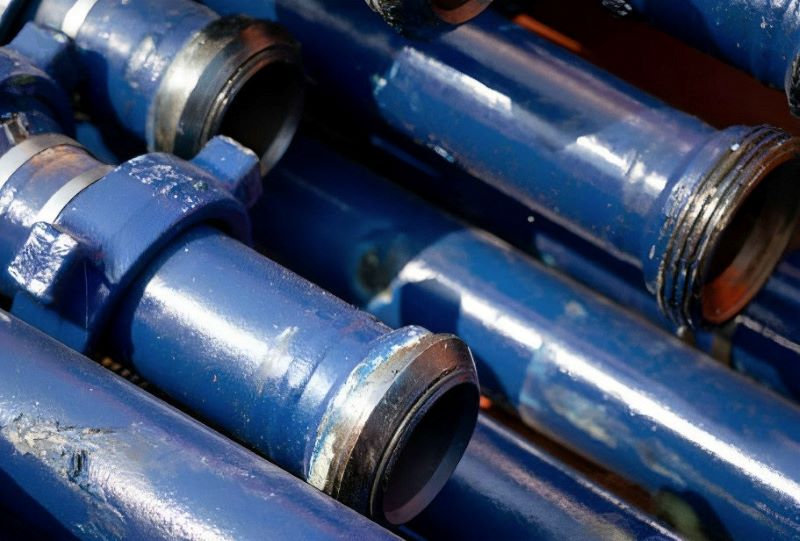
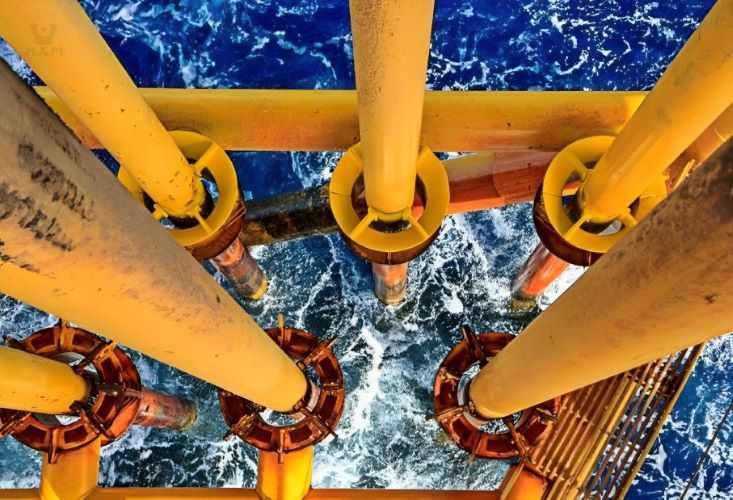
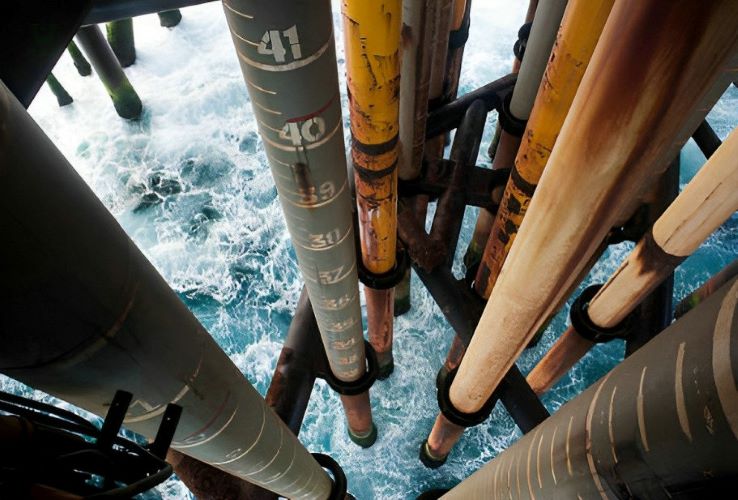
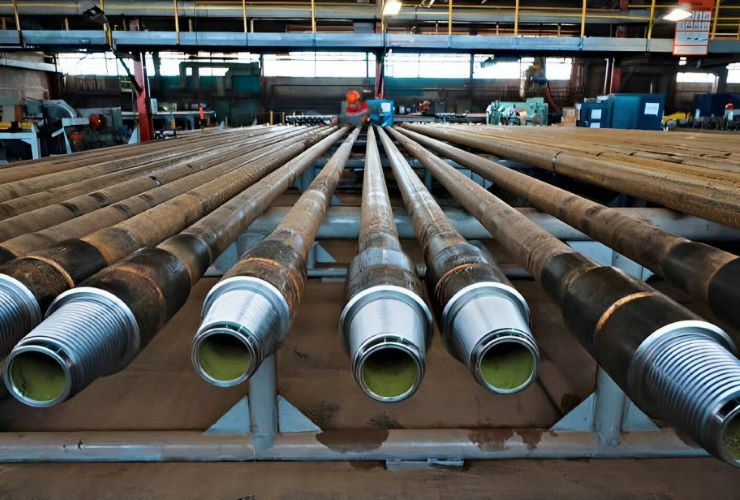
- Integral Component of the Drill String: Seamless stainless steel drilling pipes are an integral part of the drill string, which encompasses the entire column of tools used in drilling operations. This includes the drill pipe, shaft collar, tools, and the drill bit itself.
- Transporting Drilling Fluid: These pipes serve as conduits for the drilling fluid (mud or drilling mud) used in the drilling process. They allow drilling fluid to be pumped from the surface down to the drill bit and back up to the surface. This circulation of drilling fluid helps cool and lubricate the drill bit, remove drill cuttings, and maintain wellbore stability.
- Providing Structural Support: Seamless stainless steel drilling pipes provide structural support to the drill string. They help transmit torque and axial loads from the surface equipment to the drill bit, allowing the bit to penetrate the subsurface formations effectively.
- Depth and Pressure Handling: Given the extreme depths involved in drilling, especially in offshore drilling, seamless stainless steel pipes are capable of withstanding the immense pressure and depths, which can reach almost 15,000 feet. Their durability and strength ensure that they can handle the challenging conditions encountered during deep drilling operations.
- Connection Points: Different sections of seamless stainless steel drilling pipes are connected using tool joints. These tool joints provide a secure and threaded connection between sections of pipe. One section typically has a male connection, which is paired with a female connection on the next section. This threaded connection ensures a tight and reliable fit.
- Variety of Sizes: Seamless stainless steel drilling pipes come in a variety of sizes and thicknesses, depending on the specific requirements of the drilling operation. These sizes may include examples like 2 ⅜ inch, 5-inch, and 6 ⅝ inch pipes, each tailored to different drilling needs.
- Resisting Wear and Tear: In some cases, seamless stainless steel drilling pipes may be equipped with features like center upsets or thick wear pads. These additions help prevent the outside of the drill pipe from grinding against the rough bedrock of the hole walls. By reducing wear, tear, and friction, these features contribute to prolonging the lifespan of the drill pipes.
- Supporting Safety and Performance: Regular inspection of seamless stainless steel drilling pipes, as with all oilfield equipment, is crucial to ensuring their safety and optimal performance. Field Service Supervisors regularly inspect these pipes to identify any signs of wear, damage, or fatigue that could compromise drilling operations or safety.
In summary, seamless stainless steel drilling pipes play a multifaceted role in the drilling process. They act as conduits for drilling fluid, provide structural support, withstand extreme depths and pressures, facilitate secure connections, and contribute to the overall efficiency and safety of drilling operations in the oil and gas industry.
FAQ
Seamless stainless steel drilling pipes, like other drill pipes, are classified into different categories based on their condition and usage history. These classifications help determine their suitability for various drilling operations:
N-Class Pipe (New Pipe):
- Description: N-Class pipes represent the highest quality and newest pipes available in the market. These pipes are typically in pristine or nearly new condition, showing minimal signs of wear.
- Strength and Reliability: N-Class pipes offer the highest level of strength and reliability, making them ideal for critical drilling tasks where performance and durability are paramount.
- Application: They are commonly used in initial drilling phases and where maximum performance is required.
P-Class Pipe (Premium Pipe):
- Description: P-Class pipes are a step down from N-Class pipes in terms of wear and condition. While they may have experienced some wear, they are still in good working condition.
- Strength and Reliability: Premium pipes retain a high level of strength and reliability, making them suitable for a wide range of drilling applications.
- Application: These pipes are often used in drilling projects where the demands on the equipment are slightly less critical than those requiring N-Class pipes.
C-Class Pipe (Various Classes – C-1, C-2, C-3):
- Description: C-Class pipes encompass a range of conditions and wear levels, including C-1, C-2, and C-3. The specific class designation indicates the extent of wear and how close the pipe may be to the end of its useful life.
- Strength and Reliability: Depending on their class, C-Class pipes may exhibit varying levels of wear and reduced strength compared to N-Class and P-Class pipes.
- Application: C-Class pipes are typically used in less demanding drilling operations or where cost-effective solutions are preferred. Their application may vary based on their specific class.
Scrap Grade Pipes (Red-Banded):
- Description: Pipes that have reached the end of their useful service life are graded for scrap and denoted with red bands. These pipes are no longer suitable for drilling and are typically recycled for their materials.
- Recycling: Due to the high cost of drill pipes, recycling is a common practice. Even at the end of their service life, these pipes can contribute to the production of new drill pipes or other steel products.
In summary, seamless stainless steel drilling pipes are categorized into N-Class (New), P-Class (Premium), and C-Class (Various Classes) based on their condition and wear levels. Each type of pipe serves specific purposes in drilling operations, with N-Class pipes being the strongest and newest, P-Class pipes offering a balance of quality and wear, and C-Class pipes being used in less demanding applications. Recycling is an eco-friendly practice for retired drill pipes, ensuring the efficient use of materials.
Seamless stainless steel drilling pipes, provided by reputable stainless steel pipe suppliers, are engineered to effectively address the challenges associated with high pressure and extreme depths in drilling operations. Here’s how they accomplish this:
High-Quality Materials: Stainless steel drilling pipes are crafted from premium-grade stainless steel alloys, known for their exceptional strength and corrosion resistance. These materials are sourced from reputable suppliers, ensuring the pipes can withstand the demanding conditions of high-pressure drilling.
Pressure-Resistant Design: The pipes are designed with thicker walls compared to standard pipes, enhancing their ability to handle high-pressure environments. This design choice ensures that the pipes maintain their structural integrity even when subjected to substantial external pressures.
Threaded Connections: Seamless stainless steel drilling pipes are equipped with threaded connections, including tool joints, that are precision-engineered to create reliable seals between pipe sections. These connections, sourced from trusted suppliers, are capable of withstanding the pressure differentials encountered during drilling.
Quality Control: Rigorous quality control measures are implemented during manufacturing to meet industry standards for pressure resistance and structural reliability. Reputable stainless steel pipe suppliers adhere to strict quality assurance protocols to provide high-quality products.
Expert Handling and Installation: Experienced drilling crews handle and install these pipes, ensuring that they are assembled and disassembled properly. This expertise minimizes the risk of subjecting the pipes to unnecessary stress or damage during operations.
Hydraulic Fluid Circulation: Seamless stainless steel drilling pipes play a pivotal role in hydraulic fluid circulation within the drilling system. The pipes enable the controlled flow of drilling fluid, maintaining pressure control while lubricating the drill bit, carrying away drill cuttings, and preserving wellbore stability.
Borehole Integrity: Proper drilling techniques and the use of seamless stainless steel pipes help maintain the integrity of the wellbore, especially during the gradual extension of the borehole’s depth. This ensures that the well remains structurally sound, preventing collapses or blowouts.
Routine Monitoring and Maintenance: Regular monitoring and maintenance protocols are followed to inspect the condition of the drilling equipment, including seamless stainless steel pipes. Suppliers often provide guidance on maintenance best practices to detect and address wear, corrosion, or fatigue issues promptly.
Adherence to Industry Standards: Reputable stainless steel pipe suppliers adhere to industry standards and regulations governing the design, materials, and operational procedures necessary for the safe and effective use of seamless stainless steel drilling pipes under high-pressure and high-depth conditions.
In summary, seamless stainless steel drilling pipes, supplied by trusted stainless steel pipe suppliers, are engineered and manufactured to meet the challenges of high pressure and extreme depths in drilling operations. Their use of high-quality materials, pressure-resistant design, precise connections, and adherence to industry standards make them a reliable choice for ensuring safety and integrity during drilling in demanding environments.
The connection joints for seamless stainless steel drilling pipes, often provided by reputable stainless steel pipe suppliers, are designed with precision and durability to ensure secure and reliable connections between pipe sections. Here’s an overview of the design features of these connection joints:
Threaded Connection: The primary design element of these joints is the threaded connection. Both ends of seamless stainless steel drilling pipes are threaded, allowing them to be easily screwed together or disconnected during assembly and disassembly. This threading design ensures a tight and reliable seal between pipe sections.
Tool Joints: Many seamless stainless steel drilling pipes feature specialized tool joints at the ends. Tool joints are heavy-duty components designed to withstand the stresses and torque applied during drilling operations. They are forged or machined to precise specifications and are integral to the pipe’s design.
Box and Pin Configuration: The threaded connection typically follows a “box and pin” configuration. The box end has an internal female threading, while the pin end has an external male threading. This configuration ensures that when two pipe sections are joined, the threads interlock securely, preventing unintentional disconnection.
Tapered Threads: To enhance the strength and reliability of the connection, the threads on seamless stainless steel drilling pipes are often tapered. Tapered threads provide a gradual increase in diameter, allowing for a tighter and more secure fit as the pipes are screwed together.
Thread Protectors: Thread protectors, often made of durable materials like plastic or steel, are used to cover and protect the threads during transportation and storage. They prevent damage to the threads, ensuring that the connection remains intact and free from debris when the pipes are assembled.
Sealing Compound: In some cases, a sealing compound or thread lubricant may be applied to the threads before connecting the pipes. This compound helps create a secure, leak-free seal and reduces the risk of galling or damage to the threads.
Precision Machining: The manufacturing of these connection joints involves precision machining to meet industry standards. This precision ensures that the threads are accurately cut and the tool joints are properly forged or machined, maintaining the integrity of the connection.
Quality Assurance: Reputable stainless steel pipe suppliers adhere to stringent quality assurance protocols to confirm the quality and reliability of the connection joints. This includes testing for thread accuracy and inspecting the tool joints for defects.
Compatibility: Connection joints are designed to be compatible with other components of the drilling string, including the drill collars and the drill bit. This compatibility ensures seamless integration within the drilling system.
In summary, the design of the connection joints for seamless stainless steel drilling pipes involves threaded connections, tool joints, tapered threads, protective measures, and precision machining. These design elements are critical to ensuring the secure and efficient assembly of the pipes during drilling operations, with a focus on durability and reliability.
The maintenance requirements for seamless stainless steel drilling pipes, often supplied by reputable stainless steel pipe suppliers, are essential to ensure their longevity and reliable performance in drilling operations. Here are the key maintenance considerations:
Regular Inspection: Conduct routine inspections of the seamless stainless steel drilling pipes. Inspect the entire length of the pipes for signs of wear, corrosion, cracks, or other damage. Look closely at the threaded connections and tool joints for any abnormalities.
Thread Inspection: Pay special attention to the threads of the pipes. Inspect for wear, galling, or thread damage that could compromise the integrity of the connection joints. Damaged threads should be addressed promptly to prevent leaks or connection failures.
Cleaning: Clean the pipes thoroughly after each use to remove drilling mud, debris, and contaminants. This helps prevent corrosion and maintains the pipes’ surface condition. Avoid the use of abrasive cleaning materials that could scratch the stainless steel.
Thread Protection: Utilize thread protectors to cover and protect the threads when the pipes are not in use. Thread protectors prevent damage to the threads during transportation, storage, and handling.
Thread Lubrication: Apply a suitable thread lubricant or sealing compound when assembling the pipes. This lubrication not only eases the assembly process but also enhances the seal and prevents galling or thread damage.
Storage: Store the seamless stainless steel drilling pipes in a clean, dry, and well-ventilated environment. Keep them protected from moisture and corrosive substances. Proper storage helps prevent corrosion and surface deterioration.
Handling: Exercise care when handling the pipes to avoid impacts or rough handling that could cause dents, dings, or surface damage. Use appropriate lifting and handling equipment to prevent physical stress on the pipes.
Visual Inspection: Perform a visual inspection before each use to ensure that the pipes are free from visible defects or damage. This includes checking for cracks, bends, or any anomalies that could compromise safety or performance.
Pressure Testing: Periodically conduct pressure testing to assess the integrity of the pipes and their connection joints. Pressure testing helps identify potential leaks or weaknesses that may develop over time.
Record Keeping: Maintain detailed records of each seamless stainless steel drilling pipe’s maintenance history. This includes inspection dates, maintenance actions taken, and any issues identified. Proper record-keeping aids in tracking the condition and performance of the pipes.
Replacement: When a seamless stainless steel drilling pipe exhibits significant wear or damage that cannot be rectified through maintenance, consider replacing the affected pipe with a new or premium-grade pipe from a trusted stainless steel pipe supplier.
Supplier Guidance: Consult with the stainless steel pipe supplier for specific maintenance recommendations and best practices. They can provide valuable guidance tailored to their products.
By adhering to these maintenance requirements and practices, drilling operators can ensure that seamless stainless steel drilling pipes remain in optimal condition, extend their service life, and contribute to safe and efficient drilling operations.
Seamless stainless steel drilling pipes, supplied by reputable stainless steel pipe suppliers, hold significant importance in the drilling industry for several key reasons:
Corrosion Resistance: Stainless steel drilling pipes are renowned for their exceptional corrosion resistance. They can withstand the corrosive effects of drilling fluids, seawater, and harsh environmental conditions, ensuring longevity and reliability in various drilling environments.
High Pressure Handling: The drilling industry often involves drilling at significant depths where high pressures are encountered. Seamless stainless steel pipes are engineered to handle these extreme pressures, maintaining their structural integrity and preventing failures that could jeopardize drilling operations.
Reliable Threaded Connections: Seamless stainless steel pipes feature threaded connections with precision-engineered tool joints. These connections are reliable and provide secure seals, minimizing the risk of leaks or disconnections during drilling.
Durability: Stainless steel pipes are known for their durability and resistance to wear and tear. They can withstand the abrasive effects of drilling operations, ensuring long-term performance and reducing the frequency of replacements.
Versatility: Seamless stainless steel drilling pipes are versatile and suitable for a wide range of drilling applications, including oil and gas exploration, water well drilling, geothermal drilling, and mining operations. Their adaptability makes them valuable across various industries.
Wellbore Stability: Properly maintained seamless stainless steel pipes contribute to maintaining wellbore stability during drilling. This stability is crucial for preventing collapses or blowouts, ensuring safe and efficient drilling operations.
Hydraulic Fluid Circulation: Seamless stainless steel pipes play a critical role in hydraulic fluid circulation. They facilitate the flow of drilling mud or fluids, which is essential for cooling the drill bit, carrying away cuttings, and maintaining well pressure.
Environmental Considerations: Stainless steel is an environmentally friendly material due to its recyclability. Retired pipes can be recycled, contributing to sustainable practices within the drilling industry.
Reduced Downtime: The reliability and durability of seamless stainless steel drilling pipes help minimize downtime during drilling operations. Reduced downtime translates to cost savings and increased drilling efficiency.
Compliance with Industry Standards: Reputable stainless steel pipe suppliers adhere to industry standards and regulations, ensuring that their products meet quality and safety requirements for drilling operations.
Cost-Effective Solutions: While initially priced higher than some alternatives, seamless stainless steel drilling pipes offer long-term cost-effectiveness due to their extended service life and reduced maintenance and replacement expenses.
Quality Assurance: Stainless steel pipe suppliers often implement stringent quality control measures, including material testing and inspections, to deliver high-quality pipes that meet or exceed industry standards.
In summary, seamless stainless steel drilling pipes are integral components in the drilling industry. Their corrosion resistance, pressure-handling capabilities, reliability, durability, and versatility contribute to safe, efficient, and cost-effective drilling operations, making them a crucial asset for drilling professionals and operators.
Selecting the appropriate drilling pipes for a specific drilling task is crucial to ensure the success, safety, and efficiency of the operation. Here’s a guide on how one can correctly make this selection, with reference to reputable stainless steel pipe suppliers:
Define the Drilling Environment:
- Consider the specific drilling environment, such as onshore or offshore, geology, and anticipated conditions (e.g., presence of corrosive fluids or high pressures).
Determine the Depth and Reach:
- Assess the depth of the drilling project and the desired reach. Deeper drilling may require pipes with higher pressure ratings and corrosion resistance.
Evaluate the Material Requirements:
- Determine if stainless steel drilling pipes are required due to their corrosion resistance and strength. Consider the grade of stainless steel that best suits the application (e.g., 304, 316L).
Understand Pressure and Temperature:
- Consider the anticipated pressure and temperature conditions during drilling. Consult with stainless steel pipe suppliers to select pipes that can withstand these conditions.
Size and Diameter Selection:
- Choose the appropriate size and diameter of drilling pipes based on the drilling equipment and hole dimensions. Ensure compatibility with other components, such as drill bits and collars.
Thread and Connection Type:
- Select the type of threaded connection that aligns with the drilling equipment being used. Verify compatibility between the pipes and the drill string.
Quality and Certification:
- Source drilling pipes from reputable stainless steel pipe suppliers who provide certified products adhering to industry standards and regulations.
Consider the Fluids:
- Evaluate the type of drilling fluid (mud) that will be used. Some drilling fluids may be corrosive, requiring pipes with enhanced corrosion resistance.
Budget and Cost Analysis:
- Assess the budget constraints of the drilling project. While stainless steel pipes may have a higher initial cost, consider their long-term cost-effectiveness due to durability and reduced maintenance.
Consult Supplier Expertise:
- Collaborate with stainless steel pipe suppliers who have expertise in drilling applications. They can provide valuable insights and recommendations based on their industry knowledge.
Maintenance and Inspection Plan:
- Develop a plan for regular maintenance and inspection of the selected pipes. Ensure that the pipes can be easily maintained and are compatible with maintenance procedures.
Environmental Considerations:
- Consider any environmental regulations and sustainability goals. Stainless steel is recyclable, making it an eco-friendly choice for drilling operations.
Safety Standards:
- Ensure that the selected pipes meet safety standards and regulations. Safety is paramount in drilling, and the right pipes contribute to a safer work environment.
Plan for Contingencies:
- Have contingency plans in place in case of unexpected challenges during drilling. Consider having backup pipes and spare parts available.
Testing and Certification:
- Require the supplier to provide testing and certification documents for the pipes, including pressure testing results and material certifications.
Consult with Drilling Experts:
- Seek input from experienced drilling experts or engineers who are familiar with the specific drilling task. Their insights can be invaluable in making the right selection.
By carefully considering these factors and collaborating with reputable stainless steel pipe suppliers, one can make an informed choice when selecting drilling pipes tailored to the requirements of the specific drilling task.
The expected lifespan and durability of seamless stainless steel drilling pipes, supplied by reputable stainless steel pipe suppliers, can vary based on several factors. However, stainless steel drilling pipes are known for their exceptional longevity and durability in demanding drilling environments. Here are key considerations:
Material Grade: The choice of stainless steel material grade plays a significant role in determining the lifespan. Higher-grade stainless steel alloys, such as 316L, offer superior corrosion resistance and durability compared to lower-grade alloys.
Corrosion Resistance: Stainless steel is inherently corrosion-resistant, which contributes to its durability. The pipes can withstand exposure to corrosive drilling fluids, seawater, and harsh environments without significant degradation.
Proper Maintenance: Regular maintenance and inspection of the pipes are essential to prolong their lifespan. Proper cleaning, thread maintenance, and inspection for wear or damage can help prevent premature failure.
Drilling Conditions: The specific drilling conditions, including depth, pressure, temperature, and the presence of corrosive fluids, can impact the pipes’ durability. Pipes used in extreme conditions may require more frequent inspection and maintenance.
Thread Protection: The use of thread protectors during storage and transportation helps prevent thread damage, ensuring the integrity of the connection joints and extending the pipes’ lifespan.
Handling and Care: Proper handling and care during assembly, disassembly, and operation are crucial. Avoiding rough handling and impacts can prevent physical damage to the pipes.
Quality Assurance: Pipes supplied by reputable stainless steel pipe suppliers are subject to quality assurance measures, including material testing and inspections, which contribute to their durability.
Compatibility: The compatibility of the pipes with other drilling components, such as drill bits and collars, can affect their overall lifespan. Properly matched components reduce wear and stress on the pipes.
Environmental Considerations: Stainless steel’s resistance to environmental factors, such as moisture and humidity, contributes to its long lifespan. Proper storage and protection from corrosive substances are essential.
Recyclability: Stainless steel is a 100% recyclable material. At the end of their useful life, retired pipes can be recycled, reducing environmental impact and promoting sustainability.
Generally, seamless stainless steel drilling pipes are designed to have a long service life, often exceeding that of alternative materials. With proper maintenance and care, they can provide reliable performance for many drilling projects. The specific lifespan of these pipes may vary depending on the factors mentioned above, but their durability and corrosion resistance make them a preferred choice for the drilling industry.
Recycling and reuse of seamless stainless steel drilling pipes are managed through a combination of industry practices, environmental considerations, and collaboration with stainless steel pipe suppliers. Here’s an overview of how recycling and reuse are typically managed:
Collection and Inspection:
- Drilling companies and operators collect retired or used seamless stainless steel drilling pipes. These pipes undergo thorough inspection and assessment to determine their suitability for reuse or recycling.
Sorting and Categorization:
- Pipes are sorted based on their condition and potential for reuse. Pipes in good condition may be suitable for reuse in future drilling projects, while those with extensive wear or damage may be designated for recycling.
Reuse in Drilling Operations:
- Pipes deemed suitable for reuse are refurbished and made ready for future drilling operations. This may involve cleaning, thread maintenance, and pressure testing to ensure their integrity and reliability.
Recycling Process:
- Pipes that are no longer suitable for drilling operations are designated for recycling. The recycling process typically involves the following steps:
- Cutting and Shredding: The pipes are cut into manageable lengths and shredded into smaller pieces.
- Melting: The shredded stainless steel pieces are melted in a high-temperature furnace.
- Casting: Molten stainless steel is cast into new forms, such as bars, sheets, or other stainless steel products.
- Quality Control: Recycled stainless steel undergoes quality control to meet industry standards for composition and quality.
- Pipes that are no longer suitable for drilling operations are designated for recycling. The recycling process typically involves the following steps:
Environmental Considerations:
- Recycling stainless steel drilling pipes is an environmentally friendly practice. Stainless steel is 100% recyclable, and the recycling process consumes less energy compared to producing new stainless steel from raw materials.
Regulatory Compliance:
- Recycling and reuse practices are often subject to environmental regulations and standards. Companies must comply with these regulations to ensure responsible and sustainable handling of retired pipes.
Supplier Collaboration:
- Stainless steel pipe suppliers may play a role in recycling efforts by offering guidance on the proper disposal and recycling of their products. They can provide recommendations on recycling facilities and processes.
Sustainability Initiatives:
- Some drilling companies and operators have sustainability initiatives that prioritize recycling and responsible disposal practices. These initiatives may include goals to reduce waste and promote recycling.
Documentation and Reporting:
- Proper documentation and reporting of recycling and reuse efforts are important for tracking progress and ensuring compliance with environmental regulations.
Awareness and Education:
- Industry stakeholders, including drilling professionals and suppliers, may engage in awareness and education campaigns to promote responsible recycling and reuse practices.
In summary, recycling and reuse of seamless stainless steel drilling pipes involve careful inspection, sorting, and refurbishment for reuse, as well as responsible recycling practices for retired pipes. Collaboration with stainless steel pipe suppliers, adherence to environmental regulations, and a commitment to sustainability contribute to the effective management of recycling and reuse efforts in the drilling industry.
The pricing of seamless stainless steel drilling pipes is influenced by a combination of factors, and it often varies based on specific requirements and market conditions. Here are the key factors that influence the pricing of these pipes, with reference to reputable stainless steel pipe suppliers:
Stainless Steel Grade: The choice of stainless steel grade significantly impacts pricing. Higher-grade stainless steel alloys with superior corrosion resistance, such as 316L, tend to be more expensive than lower-grade alloys like 304.
Pipe Size and Diameter: The size and diameter of the drilling pipes directly affect their cost. Larger-diameter pipes generally command higher prices due to the increased material and manufacturing costs.
Wall Thickness: Thicker-walled pipes are more robust and capable of withstanding higher pressures but are costlier to produce than thinner-walled pipes.
Pressure Rating: Pipes designed to handle higher pressures require specialized manufacturing processes and materials, leading to higher pricing.
Length of Pipes: Longer pipes are more expensive due to the increased material and production costs. Custom lengths may also incur additional charges.
Thread and Connection Type: The type of threaded connections and tool joints can influence pricing. Premium or specialized connections may come at a higher cost.
Quantity Ordered: Bulk orders or large quantities of pipes may qualify for volume discounts, reducing the unit cost per pipe.
Quality and Certification: Pipes that undergo rigorous quality testing, inspections, and certification processes from reputable suppliers may have higher prices due to the assurance of quality and compliance.
Market Conditions: Market supply and demand dynamics play a significant role in pricing. During periods of high demand, prices may rise, while oversupply can lead to price reductions.
Global Economic Factors: Economic factors such as fluctuations in currency exchange rates, trade policies, and global economic conditions can impact the pricing of stainless steel and, consequently, drilling pipes.
Transportation Costs: Shipping and transportation costs from the supplier to the drilling site can affect the overall price, particularly for international orders.
Customization: Customized specifications, such as unique threading or special coatings, may lead to higher costs compared to standard off-the-shelf pipes.
Supplier Reputation: Reputable stainless steel pipe suppliers with a history of delivering high-quality products may command slightly higher prices due to their reliability.
Material Availability: The availability of stainless steel materials, especially during periods of material shortages or supply chain disruptions, can impact pricing.
Additional Services: Value-added services provided by suppliers, such as machining, cutting, or custom finishing, may come with additional charges.
Environmental Regulations: Compliance with environmental regulations, especially those related to sustainable and eco-friendly practices, can influence pricing.
Quality Assurance: Pipes with comprehensive quality assurance processes, including traceability and documentation, may be priced slightly higher due to the added value.
Overall, the pricing of seamless stainless steel drilling pipes is a complex interplay of material specifications, market dynamics, customization, and supplier factors. To obtain accurate pricing, it’s essential to work closely with reputable stainless steel pipe suppliers who can provide quotes tailored to specific project requirements and market conditions.
other products
Get In touch
Ready to Elevate Your Projects? Dive into our Stainless Steel Collection and Submit Your Specifications Today!
Phone/WeChat: +86 13381673250
Email: [email protected]
Address: RM557, NO.1388 Jiangyue Road, Shanghai China


